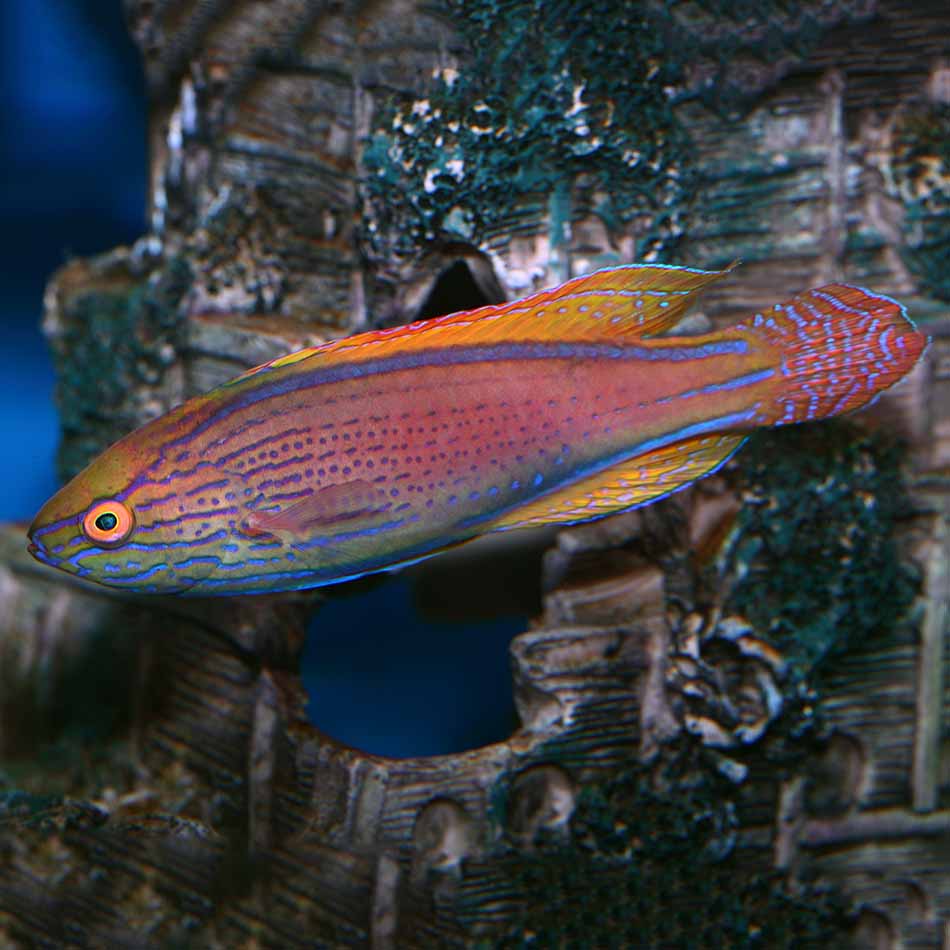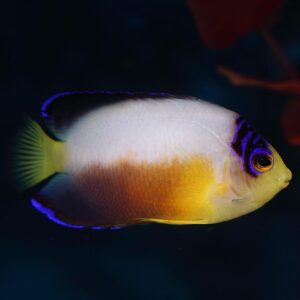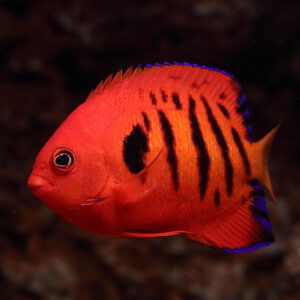Lineatus Fairy Wrasse male, Cirrhilabrus lineatus, also go by the name purple lined wrasse.
They make fantastic occupants to a marine tank, thanks to their stunning looks. Lineatus Fairy Wrasse have beautiful, pink and yellow bodies, bejewelled with deep purple stripes. They have elegant fan shaped tails. Their fins are large and ornate. Males have yellow fins with blue speckles, with the exception of their tail, which is red. In contrast, females have yellow fins that are not as decorative yet. Males also sport bold purple stripes along their back and belly.
Lineatus Fairy Wrasse male, Cirrhilabrus lineatus, Ecology.
These beautiful fish live on the great barrier reef and the coral sea.
The complex habitat help the wrasse avoid predation. Unlike some species, these fish do not bury themselves to sleep or hide. Instead, they have quite a nifty trick. In order to sleep safely, Lineatus Fairy Wrasse find a nook they like. They then envelope themselves in a protective mucus coat. Supposedly, this hides the wrasses scent from predators. These sticky invisibility cloaks do not degrade your water quality like some coral wax jackets’ might.
In Nature, Lineatus Fairy Wrasse live in groups with one male to a few or more females. Dominant males instigate spawning by preforming their courtship display. He will dash around, showing off his colours to the harem. These fish are protogynous hermaphrodites. Which means that, when they get old enough, breeding females turn into a male. As a result, all juveniles are immature females.
Purple Lined Wrasse in the Aquarium.
It is important to imitate the natural environment by providing plenty of nooks and crannies for the wrasse to hide in. Hobbyists should invest in a jump guard to prevent any unfortunate mishaps.
Lineatus Fairy Wrasse male do best when fed a varied diet. They will accept enriched frozen mysis shrimp and enriched frozen brine shrimp. They will also devour live foods, such as copepods and amphipods, that can be cultivated in attached refugium. Over time they will accept high-quality pellet or flake. We adapt all our wrasse to aquarium life before they leave us. We focus on their health, and most are eating a good quality flake food and/or pellet, such as JBL Maris, before being offered for sale.





Reviews
There are no reviews yet.